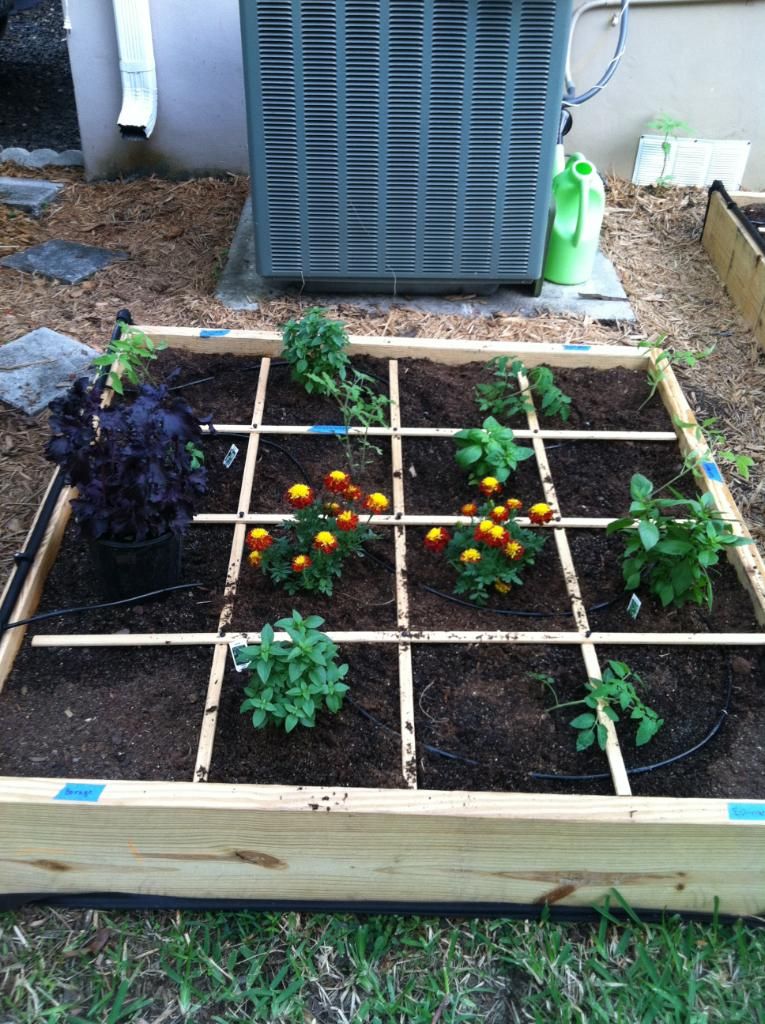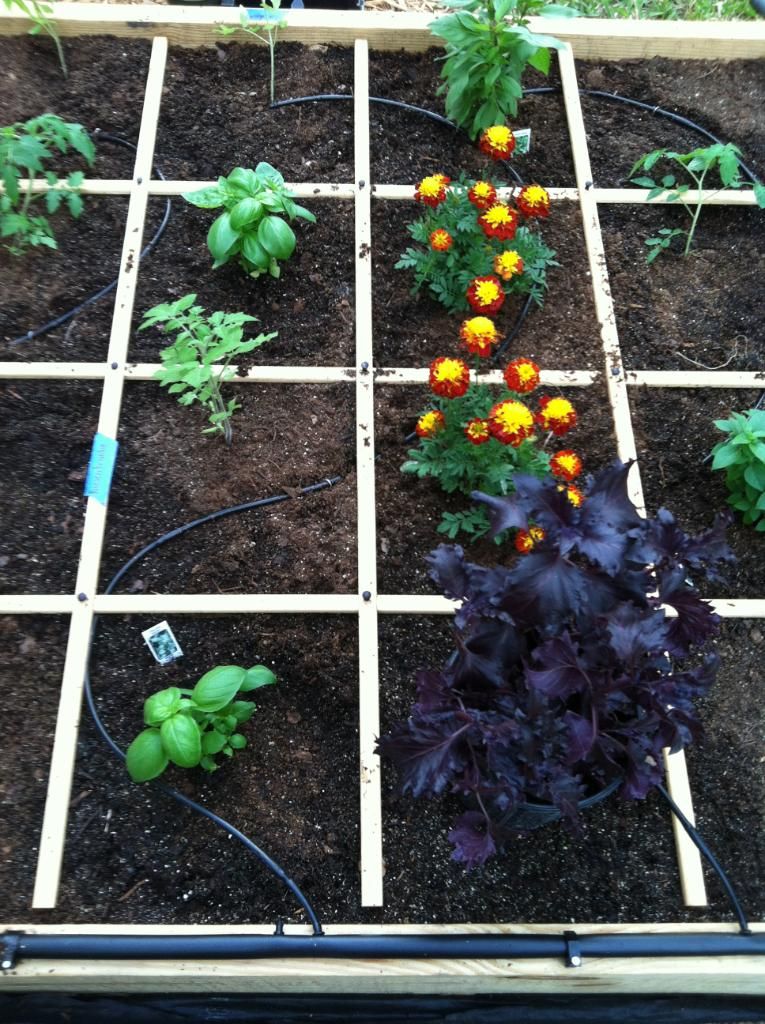Hummingbirds live only in the Americas. Of the 338 species known, 16 are found in the United States and 3 occur in Florida. Black-chinned and rufous hummingbirds occasionally can be seen in Florida during the winter. The ruby-throated hummingbird is by far the most common hummer in the state. This feathered jewel is about 3 inches (7.5 centimeters) long and weighs as little as a penny (¼ ounce). Its name describes the most brilliant part of the mature male's plumage. The throat feathers contain air bubbles that give off an iridescent red tone in full light. Their backs are metallic green and they have two sets of tail feathers: two green ones in the center that cover eight outer black ones when they're folded. In females and juveniles, the black feathers have white tips; males lose the white tips as they mature.
Most Ruby Throated Hummingbirds arrive in South Florida in October and stay until May. I am surprised it has taken so long to notice one this year. I am always busy doing something in the garden, so I thought I would have seen one sooner. Today was so enjoyable because the whole time I was putting in the drip irrigation system several hummingbirds were fluttering over my head enjoying the different sources of nectar plants that I have in the yard. Just like my butterfly garden I have been planting for hummingbirds for many years. I have so many different nectar sources for them to choose from. Red is by far their favorite color. They are most attracted to red. Today the hummingbirds were flying from the oak tree in the front yard over to the clerodendruim, and dwarf poinscianna. It was a constant path where I am putting the raised bed vegetable gardens, and drip irrigation. It was almost like they were saying, “Here we are, we are back for you to enjoy!” It is truly amazing to watch how quickly their little wings flutter. One year I was able to watch a hummer every evening roost way up in one of my neighbor’s trees. He was always there and a constant source of enjoyment in my yard.
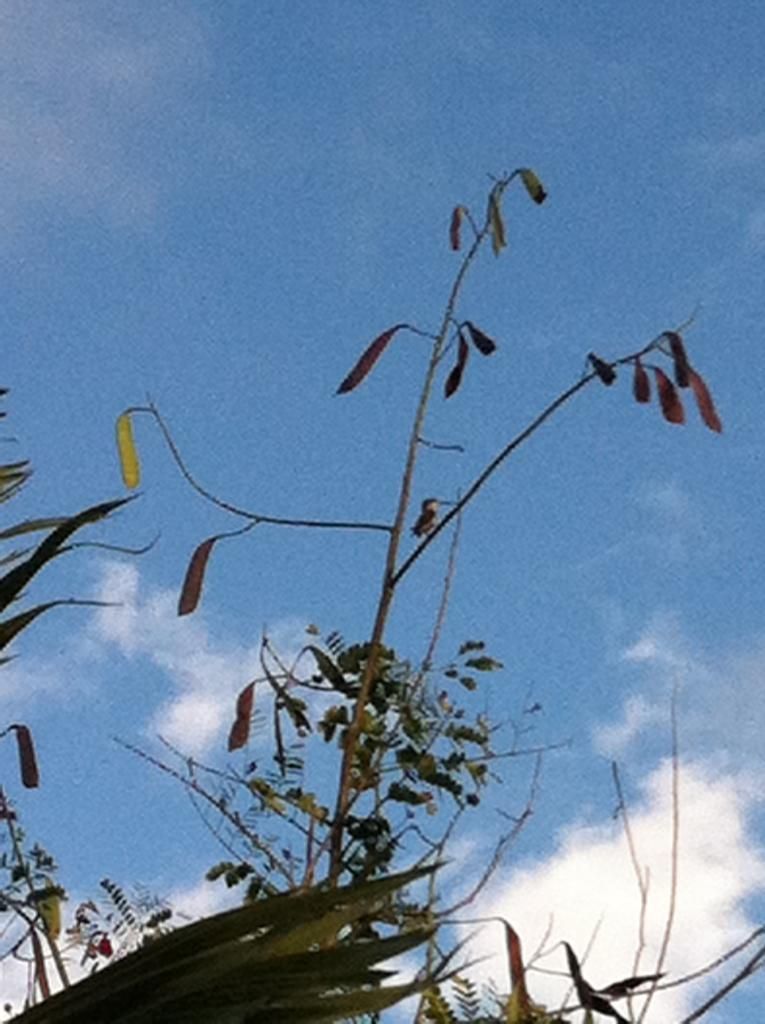 | 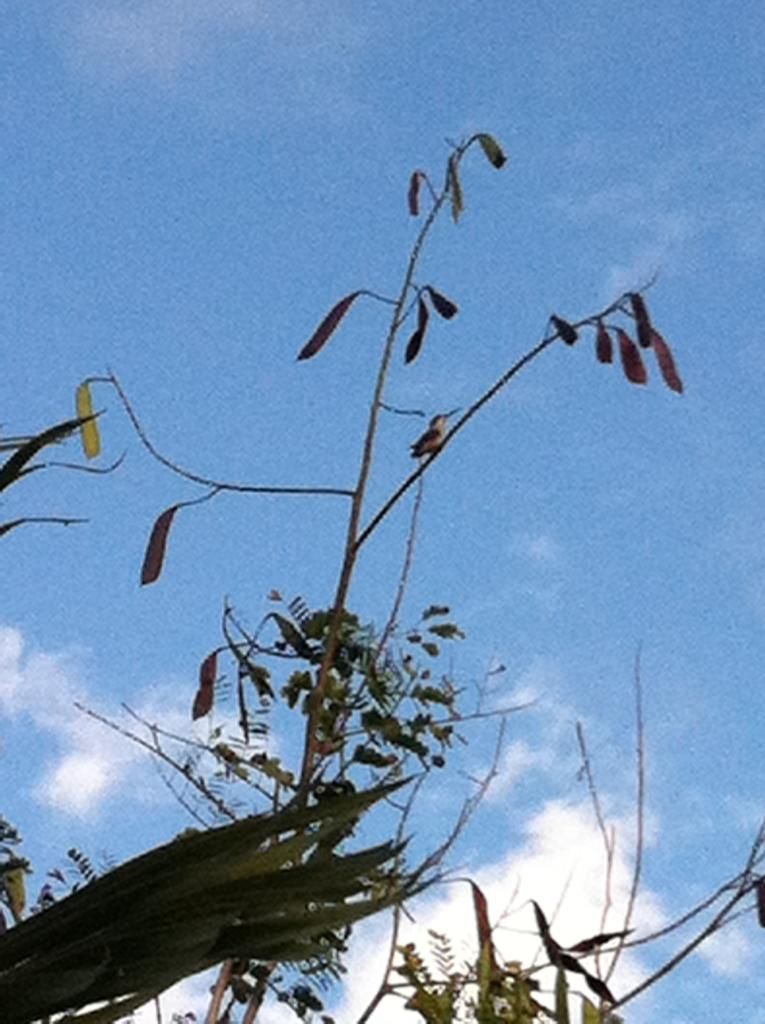 |
Whether or not you see any hummers anytime during the year in Florida depends on if you have food and shelter to offer them, and how long it takes for them to find you. I am a firm believer that if you plant it, they will come! Well-kept feeders are another very enticing way to attract them. Having both feeders and nectar plants as well as large trees for shelter are some of the necessities they will be looking for. If you have a good habitat, you may very well host one or more winter hummers that will hang around your area and frequent your yard for a season or two.
Hummingbird feeders are a great way to attract the birds to your yard. I make a solution 4:1, 4 parts water to 1 part sugar. It is important to make sure you change the solution every 3-5 days, which is sometimes difficult to do. I noticed that my bees have discovered my hummingbird feeders. The hummingbirds will continue to feed despite the bees, unless there are too many. Most hummingbirds are very territorial and usually you won’t see several feeding from one feeder at a time. I don’t like that my bees are drinking from the feeders. Sugar water, although they are very attracted to it, is not the best thing to feed your bees. As an organic gardener and beekeeper I never feed my bee’s sugar water. If I had to feed them I would feed them honey. Thank goodness that in South Florida there is usually a nectar source for the bees year round. There may be some times of dearth but it is usually very short and in the heat of the summer. I digress, but bees have a memory like an elephant. They never forget. Once they discover a nectar source, whether it be a plant or sugar water, they will return until you move it. I am thinking the next time I change the sugar water I need to change the location of the feeders to confuse the bees for a day or so until they discover where I move them too.
Some of the plants that I have to attract the hummingbirds are: Fire Bush, Fire Spike, Native Coral Plant, Lantana, Justicia, Powder Puff Plant( red and pink), Dwarf Poincianna, Shrimp plant, Butterfly bush, Clerodendrum, pentas; I could go on and on. I just planted this year’s Cardinal Vine. I read about it from Margaret Roach, “A Way to Garden” . The plant originates in Mexico, so I decided I would try planting it in my garden. It had a beautiful red flower on it this morning. I am hoping that as it grows it will attract lots of hummers.
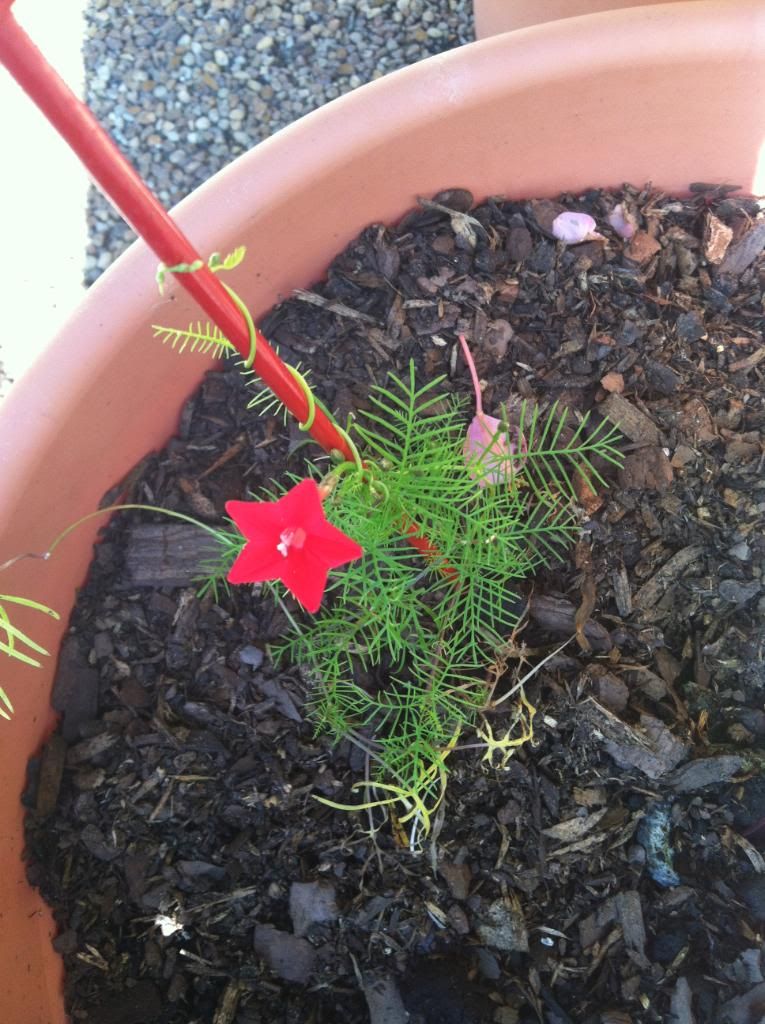 | 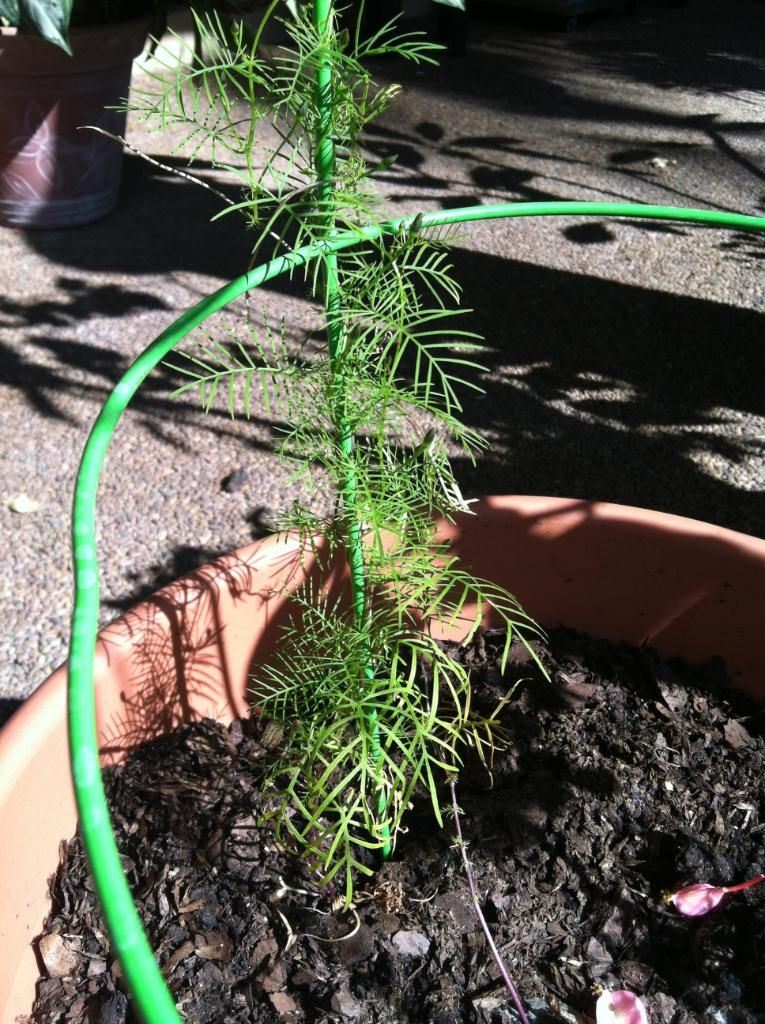 |
One of the best reasons to plant a hummingbird garden is that once you attract them, many of the birds will return the following seasons. I look forward every year to that first sighting, and enjoy having hummers in my garden throughout the winter.




